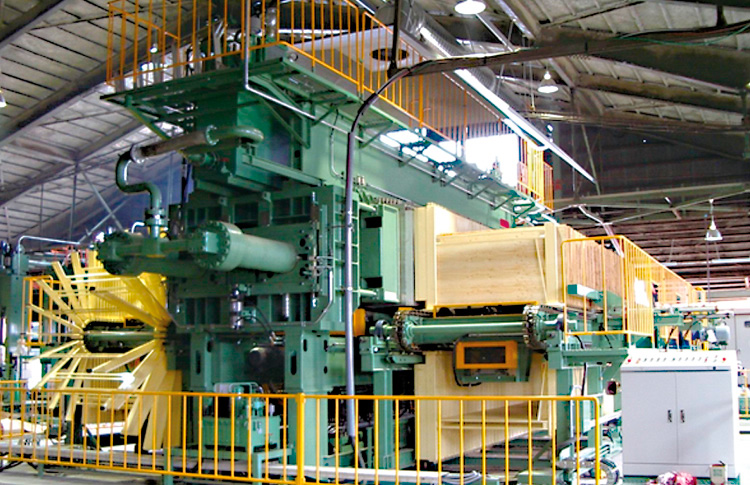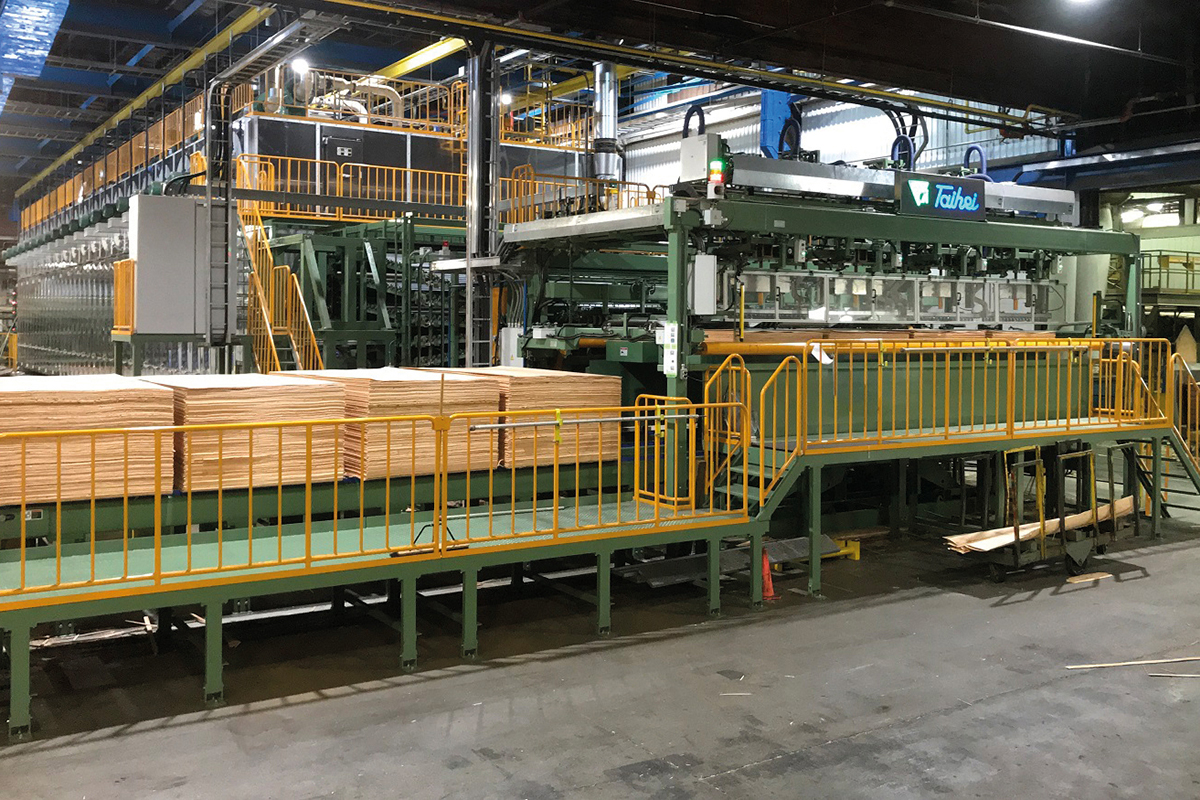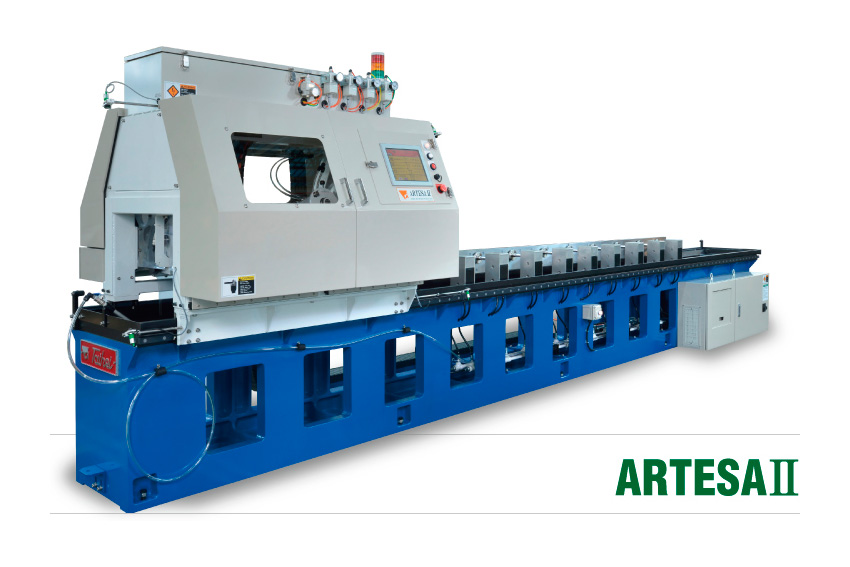Takeshi Saito, CEO of Taihei Machinery, a prominent Japanese woodworking equipment manufacturer, sheds light on the strategy for expanding its presence overseas while attracting new clients, recognizing that it's not all about price.

Over the past 25-30 years, Japan has seen the rise of regional manufacturing competitors from countries that have replicated Japanese manufacturing processes and taken advantage of cheaper labor costs, pushing Japan out of mass industrial markets. Yet we still see many Japanese firms, especially SMEs, maintain their leadership in niche B2B fields. How have Japanese firms maintained this leadership despite the stiff regional competition?
If you face price competitiveness from a global perspective, Japanese companies will lose, so for that sake, many are looking to technical know-how and better technologies as advantages. We, alongside any other company, would like to be competitive amongst foreign-affiliated companies. We have come up with a formula that is quality plus working environment equals productivity, equals efficiency, and equals competitiveness. Of course, we try to implement high-quality manufacturing standards from our end, while at the same time, we are creating a more peaceful and satisfactory work environment for our employees. Basically, we are setting up all the necessary conditions to have good efficiency, which ultimately results in high-quality products. That in itself results in our competitiveness as a company, allowing us equal footing against global rivals.
We really are not that different from any other Japanese manufacturing company and we are always striving to achieve ultimate levels of customer satisfaction. Even after the point of sale has happened, we do offer after-sales services to continue to satisfy the needs of our clients. Catering to those needs beyond the customer’s expectations is something that I think defines Japanese manufacturing companies and something you will not see anywhere else in the world. We can proudly say that this attitude is a big component of Japanese success on a global stage.
Of course, it is case by case, but our products are tailor-made for foreign markets. If we talk about our veneer dryer, press or grinders, we are dealing with different types of wood. Some of those trees cannot even be found here in the domestic market. In order to adapt to this, we ship logs from overseas to Japan so that we can test our equipment and make adjustments. If everything works well, then we can ship the equipment to the customer. Basically, we are trying to cross-check everything before the customer receives the final output in order to ensure that the customer will be 100% satisfied with their purchase.
It can be quite risky because if, for example, we shipped out equipment and it does not work locally for whatever reason, we are going to lose orders and take a hit to our reputation. Keeping our promises to our customers in this sense is important, otherwise, we just will not be able to continue our business in a sustainable way.
One piece of equipment you produce is the horizontal press, a hot press for heat compression after gluing and pre-pressing processes. This press differs from conventional presses because the hot platens are installed horizontally in conventional machines, whereas the horizontal presses are installed vertically. What advantage does this differentiation bring to your customers?
Yes, as for the conventional presses (vertical press), the hot platens are installed horizontally and the compress operation is done vertically (usually lifting up), and as for the horizontal press, the hot platens are installed vertically and the compress operation is done horizontally (usually compressed from both left and right). For example, take 50 openings vertical press, 50 hot platens are installed toward the roof by regular intervals.
Please imagine it like a wide ladder. The material to be heat-pressed is inserted between these hot platens which looks like the ladder. The bottom hot platen is mounted on the compression frame which is raised and lowered vertically. The material that is inserted into the bottom interval as the compression frame is pushed up by the huge cylinder, lifts the upper hot platens, loading the weight of one hot platen after another. Finally, there is a considerable difference in the applied load between the top and bottom material. The product has a thickness difference of 4%. This is recognized as almost all in-spec products. However, if it exceeds 50 openings, the probability of it becoming a non-standard product increases. Therefore, the number of openings up to 50 is the limit for vertical presses. All products that have been heat-pressed are generally sanded on the surface. The cut amount of the sander for the product on the lower side material and the upper side material is certainly different, but it is also an in-standard product. There is never such a thickness difference even if the horizontal press exceeds 50 openings, and it can increase the number of openings to 120 or 140, this is our confidence.

Taihei Machinery provides consulting services for automation, so can you tell us a little bit more about the role that Taihei plays in promoting the automation of plywood manufacturing?
We did this for a customer who has high expectations for our concept. Together with ourselves, we began thinking about the best features to create a plywood manufacturing location together. The need for plywood in the domestic and global construction sectors is increasing daily. Right now, our thoughts are not finalized, but we are in active discussion to create the dream factory that meets any and all customer needs related to plywood manufacturing. Automation and more equipment have been requested by customers in the sector, so as an active company in the market we need to research ways of meeting those growing needs. Enlarging our production capabilities in unison with the customer would put our company on a whole new level.
To achieve that would you look for local partnerships?
Word of mouth works well for our company, at least in the situation we are in right now. Basically, the customers speak about the good quality coming from ourselves. Overseas distribution actually does not work well for us because we feel that we want to use our own voice in that area to tell potential consumers straight from our own mouths rather than someone working on our behalf. It also works both ways and we would rather hear from customers directly on exactly what they need. In the past, we have tried to establish distribution channels, but it really did not work out that well.
We have been dispatching our personnel overseas to go to the customers and talk directly to them, and this also goes for potential customers too. We want to know what kind of wood processing they want and what equipment might be needed in a particular area or region. This is the only way we think we can properly promote our products overseas, and this strategy has worked very well for Taihei Machinery for many years now.
Southeast Asia as a market is pretty much understood by us at this point. We know the type of wood that is grown and we know the companies, thus the needs of the region. America and Europe unfortunately are a different story and we have yet to grasp fully those two large regions. The only way to do this is to go and talk to them. Some American companies have purchased our presses and equipment, and right now, I do not think the company really needs to push itself beyond our current overseas activities. As I mentioned, word of mouth is extremely powerful, and once a company signs up, they talk to its affiliates. This spread of information creates a network of companies that are interested in our products and services.

With sustainability issues becoming ever more prominent in modern business, plywood is seen as an effective and eco-friendly material. In 2021, the plywood market was worth around USD 105 million and it is expected to grow to around USD 147 million by the year 2030. How do you plan on catering to this expected market growth in the future?
The plywood market is showing great expectations as you just explained, but I would go as far as to say that it goes beyond that to all woodworking sectors. Domestically and overseas construction is looking to wood material because of its sustainability. As a woodworking equipment manufacturing company, we would like to continue to introduce new products and services to cater to the growing demand in the sector.
Needs are coming in not only for more volume but also for the thickness of the plywood itself. Residential construction has a need for more sophisticated shapes and variations in plywood. Currently, in the domestic market, we produce 12-30mm thickness plywood but now we are producing thicknesses LVL products that use veneer are also manufactured with a thickness of 100mm or more. This thickness is not commercialized yet, but we have been demonstrating it at exhibitions as one kind of column that is 6 meters long, 700mm thick and 900mm wide.
When do you plan to release it?
We have just made two test samples, so we are still thinking about where to introduce them. We are still in the trial period, so we do not have anything set in stone just yet. In fact, it might just be a demonstration piece for exhibitions to see if it works. In the domestic market, there are many types of certifications so it is not enough to just come up with a product; you have to have permission to use it in the construction sector.
Will this expo be held in Japan?
Yes, it will be. The business itself is confined domestically with only a limited number of companies. Woodworking exhibitions are held frequently and we always participate. This whole exhibition process helps us understand what customers really want from the products we make.
Is participating in exhibitions internationally also an area of interest for Taihei Machinery?
Last week, 10 people from our company went to Hanover for an expo. It was a specific woodworking expo in Germany and we participated. There we introduced the horizontal press and dryer to the European market. According to the employee’s reports, the exhibition has become smaller and the number of visitors has decreased. As our equipment is so big, we actually utilize VR headsets so that potential customers can see how it works when linked to production.
One product that interested us is the ARTESAII Super Precision knife honing machine. Can you tell us a little more about how the ARTESAII series is superior to conventional knife grinding machines?
In order for the ARTESAⅡ to exercise its knife edge honing performance, straightness accuracy is an important prerequisite for grinding the knife body before honing the knife edge. In addition, there is no wood processing machine that can process a minute honing land width on the knife edge like ARTESA2. By using ARETESAII, the blade angle is honed in a pattern suitable for veneer peeling according to the hardness of the log (narrow leaf wood, tropical wood, etc.), and a multi-stage fine uniform honing land width can be obtained on the edge of the knife. As a result, we believe that the ARTESAII will be a machine that greatly contributes to the recovery, quality and productivity of veneer peeling. Grinding knives is essential in the field of plywood wood processing machinery. More than 30 years have passed since it was developed as a machine that would replace manual sharpening that lacks uniformity and reproducibility. Now, it is used not only in Japan but also in countries around the world.

We know that you export your machines across the world, so for Taihei Machinery, what region or country is key for your corporate growth going forward?
The key is tackling Europe and North America, and Southeast Asia was the starting point for this expansion. ASEAN is one part of Asia, and therefore the needs of that market are very similar, but there is a gap between Asia and the West in terms of business culture and corporate ethics. We would like to understand those markets more so that we can introduce our equipment in those faraway places. Europe in particular is a region that has eluded us thus far, but now that is changing with the recent exhibition in Germany as well as ties we have in France. We are looking to continue this momentum and analyze the market, gather information, and put a clear plan in place.
What would you say is your best-selling product?
The entire series to some extent has been successful and that includes the horizontal press, the jet dryer, and the grinder. That answer could be one of three types of machines: grinders, dryers and press machines. It is not something that we can take to mass production, you have to remember that it is a niche segment. Volume is very small; we are talking around three units or more each year.
Are there any new products under development that you would like to showcase today?
A good method of drying wood is something that the industry is always demanding. There is a need to keep the balance of the moisture inside the wood itself, and honestly, this is going to be an everlasting issue. Coming up with a better solution for drying is something that we are thinking about right now. If we could introduce this new solution within two years, I think it could be a fantastic achievement.
Interview conducted by Karune Walker & Sasha Lauture
0 COMMENTS